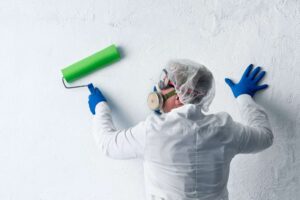Local Law 31 Requires landlords of NYC buildings built pre 1960 to have all rented out dwelling units XRF Lead Tested. As a landlord, you have limited time to get these apartments inspected which we will go over in detail below.
What is Local Law 31 of 2020?
Local Law 31 of 2020 went into effect on August 9, 2020 and requires landlords to have XRF inspections done by EPA-Certified inspectors. When the law passed, it included a 5 year testing requirement, meaning all NYC units affected by the law have until August 9, 2025 to complete testing and reporting.

Any unit that has a child under the age of 6 residing there only has until August 9, 2021 to comply with the law. It is important to note that “resides” means that a child spends 10 or more hours per week in the apartment.
To avoid costly penalties and fines, we must comply with Local Law 31 by the deadline.
What is XRF testing?
XRF or X-Ray Fluorescence is a device used to detect the concentration of an element within the surface of a component. Trained professionals can use this device to test for the concentration of Lead Based Paint. These inspections can cost several hundred dollars depending on the size of each unit due to the machine being expensive to own and operate.
EPA-certified Lead Inspectors or Risk Assessors can perform an XRF test in order to comply with Local Law 31. The inspection takes 1-2 hours since all painted components in the unit are tested. If the unit is found to be Lead Free, you can send an exemption application to HPD in order to make the apartment Lead Exempt.
On December 1, 2021 HPD has created a new threshold for lead-based paint at 0.5mg/cm2. The threshold was originally 1.0mg/cm2. Any landlords who were exempt under the previous guidelines does not need to do XRF testing until a tenant moves out and they have turnover.

Lead Based Paint Hazards
According to the HPD website, the following are examples of lead based paint hazards
- Peeling, chipping, or damaged lead paint
- Dust from deteriorating lead paint
- Lead paint on crumbling plaster or rotted wood
- Lead paint on friction surfaces including doors, door frames, windows, and window sills that stick or rub together
- Lead paint on other surfaces that children can chew or that get a lot of wear-and-tear
Although Lead paint was banned in New York City in 1960 it still effects children today. Don’t let your tenants get lead poisoning.
